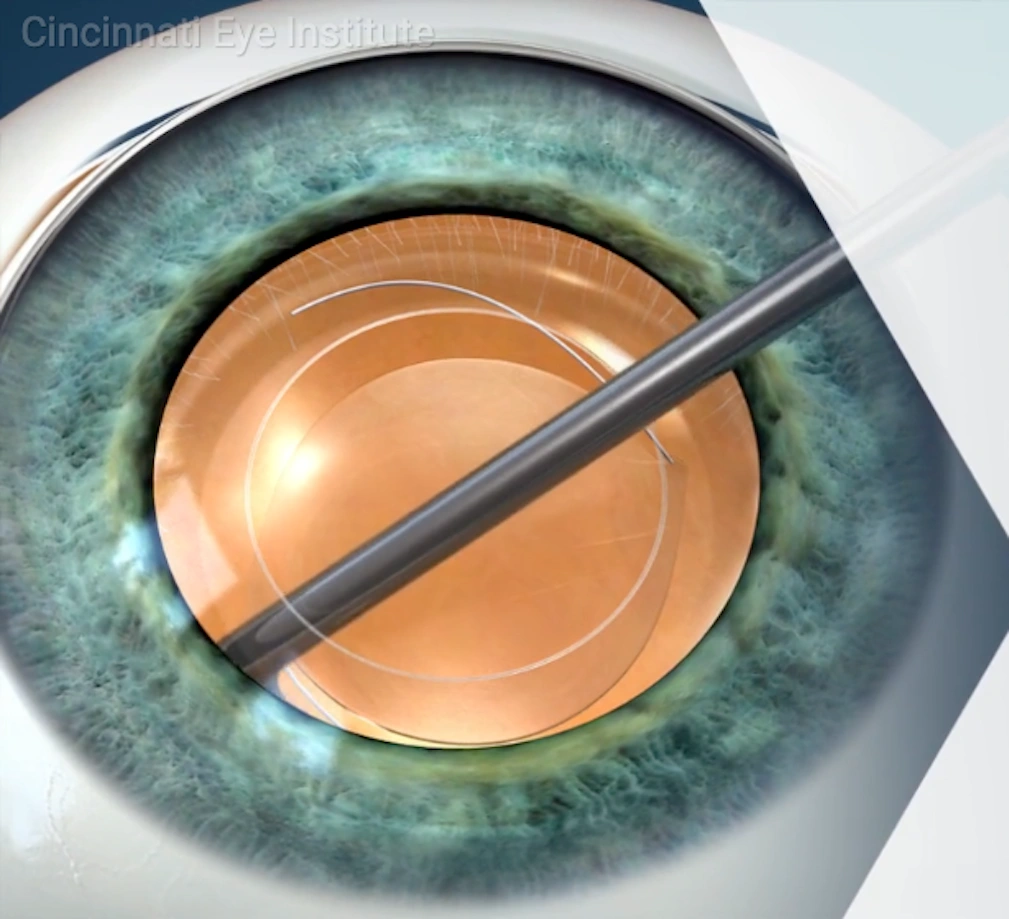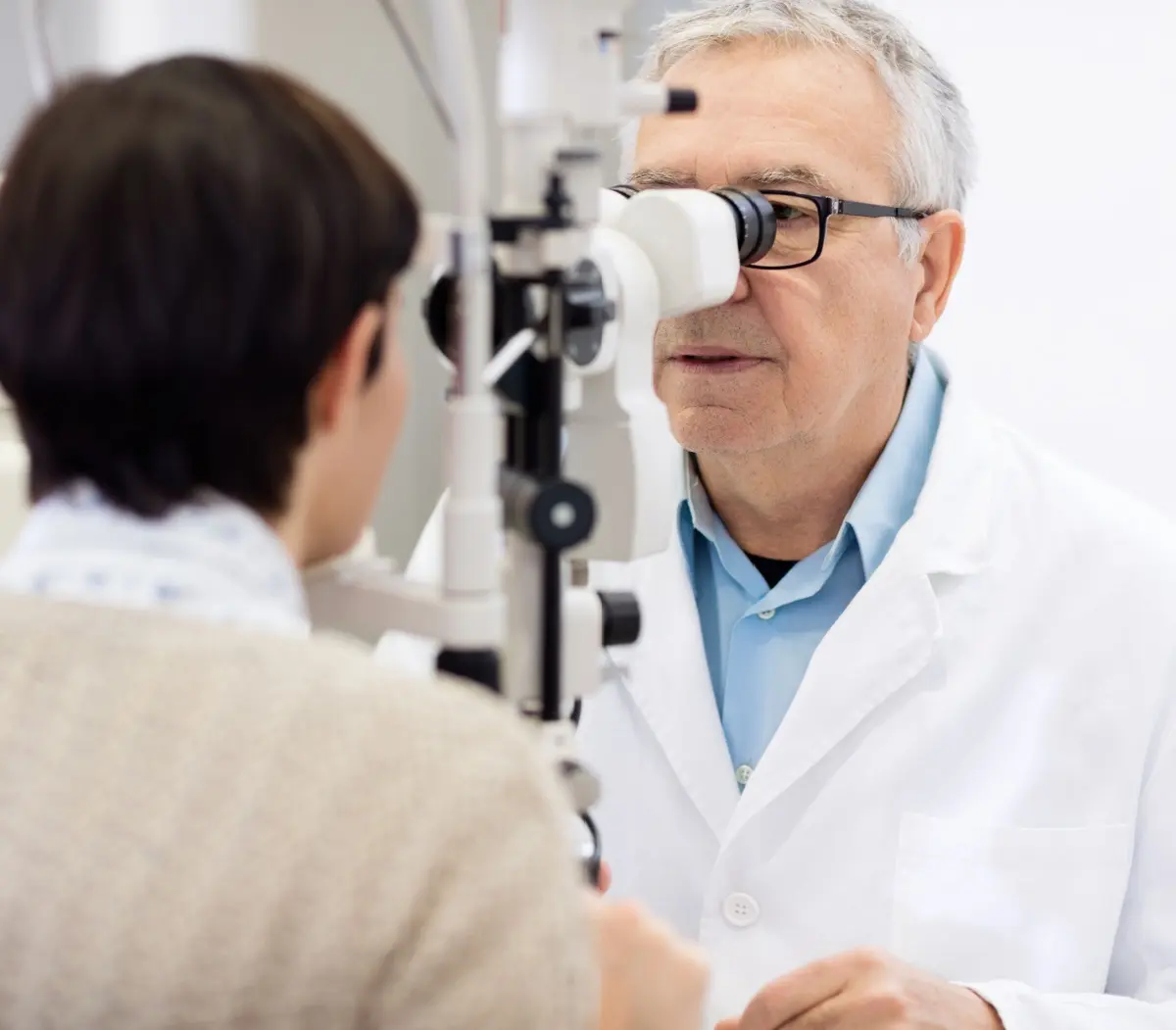
Cataracts
Cataracts affect millions of people each year, including more than half of all Americans 60 years of age and older.
If you are encountering blurred vision, muted colors, and increased difficulty seeing while driving at night, it’s quite possible that you have developed cataracts. This is a very common condition that affects up to 50% of Americans by the age of
Trusted Source
Cataract Data and Statistics
National Eye Institute
Go to Source
75.
At Cincinnati Eye Institute, our experienced ophthalmologists can diagnose and treat cataracts, restoring your clear vision or even helping you see more clearly than you did before you developed cataracts.

What are Cataracts?
A cataract is a natural clouding of the eye’s lens. Think of the lens like a window: when it becomes cloudy, it is more difficult to see through the window clearly. Cataracts affect the eye in much the same way.
For most people, cataracts progress slowly. When a person’s cataracts are in their early stages, he or she may be able to achieve clearer vision by changing eyeglass prescriptions or using stronger lighting. Eventually, cataracts will progress to the extent that they impede vision and surgical treatment is
Trusted Source
Cataracts
Mayo Clinic
Go to Source
necessary.

Symptoms of Cataracts
At first, symptoms of cataracts are often mild and may not even be noticeable without an eye exam. As cataracts progress, symptoms include:
- Blurred vision
- Increased glares, halos, or difficulty with night vision
- Light sensitivity
- Muted or dulled colors
- Frequent changes in prescription for glasses or contacts
- Double vision in one eye
Risk Factors for Developing Cataracts
The most common risk factor for developing cataracts is age: most people will begin to develop cataracts at around age 40, though symptoms may not become apparent for decades after that. Additional factors that can increase a person’s risk of developing cataracts include:
- Smoking
- Obesity
- Exposure to air pollution
- Heavy alcohol use
- Exposure to radiation
- Eye injuries
- High blood pressure
- A family history of
Trusted Source Cataracts Cleveland Clinic Go to Source cataracts

Cataract Diagnosis
While you may not be able to see cataracts with the naked eye, this condition can be quickly and easily diagnosed by an ophthalmologist during a comprehensive eye examination, which includes:
- Review of patient history
- Refraction and visual acuity tests
- A slit lamp examination to view the lens of the eye
- Examination of the retina
- Testing for glare sensitivity
- Testing color vision
- Measurement of the pressure within the eye (tonometry)

Cataract Surgery
The only treatment for cataracts is cataract surgery, where the clouded natural lens of the eye is removed and replaced with an artificial intraocular lens (IOL). Cataract surgery is among the most frequently performed surgical procedures in the United States and is generally considered to be very safe, with more than a 99% success
Trusted Source
Is Cataract Surgery with Vision-Correcting IOLs Safe?
American Refractive Surgery Council
Go to Source
rate.
Can Cataracts Be Prevented?
For most people, cataracts are a normal part of the eye’s aging process. Cataracts cannot be prevented, but it may be possible to slow their progression and protect your eye health by taking certain steps, such as:
- Quitting smoking
- Reducing alcohol consumption
- Protecting your eyes from UV light by wearing a hat or sunglasses outdoors
- Eating a healthy diet rich in antioxidants
Convenient Locations in and around Cincinnati
We Look Forward to Seeing You!

1945 CEI Drive
Blue Ash OH, 45242

9997 Carver Rd, Level 2
Cincinnati OH, 45242

2055 Hospital Dr Suite 255
Batavia OH, 45103

601 Ivy Gateway Suite 301
Cincinnati OH, 45245

580 S Loop Rd Suite 200
Edgewood KY, 41017

563 Wessel Dr,
Fairfield OH, 45014

6507 Harrison Avenue, Suite E
Cincinnati OH, 45247

5240 East Galbraith Suite B
Cincinnati OH, 45236

275 Bielby Rd,
Lawrenceburg IN, 47025

87 US-22 #100,
Maineville OH, 45039

6150 Radio Way,
Mason OH, 45040

5850 Innovation Dr,
Middletown OH, 45005

10615 Montgomery Rd
Suite 202,
Cincinnati OH, 45242

4760 Red Bank Expy #108,
Cincinnati OH, 45227

222 Piedmont Ave Suite 4000,
Cincinnati OH, 45219

3310 Mercy Health Boulevard Suite 220
Cincinnati OH, 45211
Schedule an Appointment
To learn more about cataracts and your cataract treatment options, please contact us at CEI to schedule an appointment with an experienced ophthalmologist.
Contact Us
1 National Eye Institute. Cataract Data and Statistics. Available: https://www.nei.nih.gov/learn-about-eye-health/resources-for-health-educators/eye-health-data-and-statistics/cataract-data-and-statistics. Accessed March 26, 2021.
2 Mayo Clinic. Cataracts. Available: https://www.mayoclinic.org/diseases-conditions/cataracts/symptoms-causes/syc-20353790. Accessed March 26, 2021.
3 Cleveland Clinic. Cataracts. Available: https://my.clevelandclinic.org/health/diseases/8589-cataracts#diagnosis-and-tests. Accessed March 26, 2021.
4 American Refractive Surgery Council. Is Cataract Surgery with Vision-Correcting IOLs Safe? Available: https://americanrefractivesurgerycouncil.org/refractive-surgery-procedures/cataract-surgery-with-vision-correcting-iols/is-cataract-surgery-with-vision-correcting-iols-safe. Accessed February 10, 2021.
The doctors at Cincinnati Eye Institute have either authored or reviewed the content on this site.




































